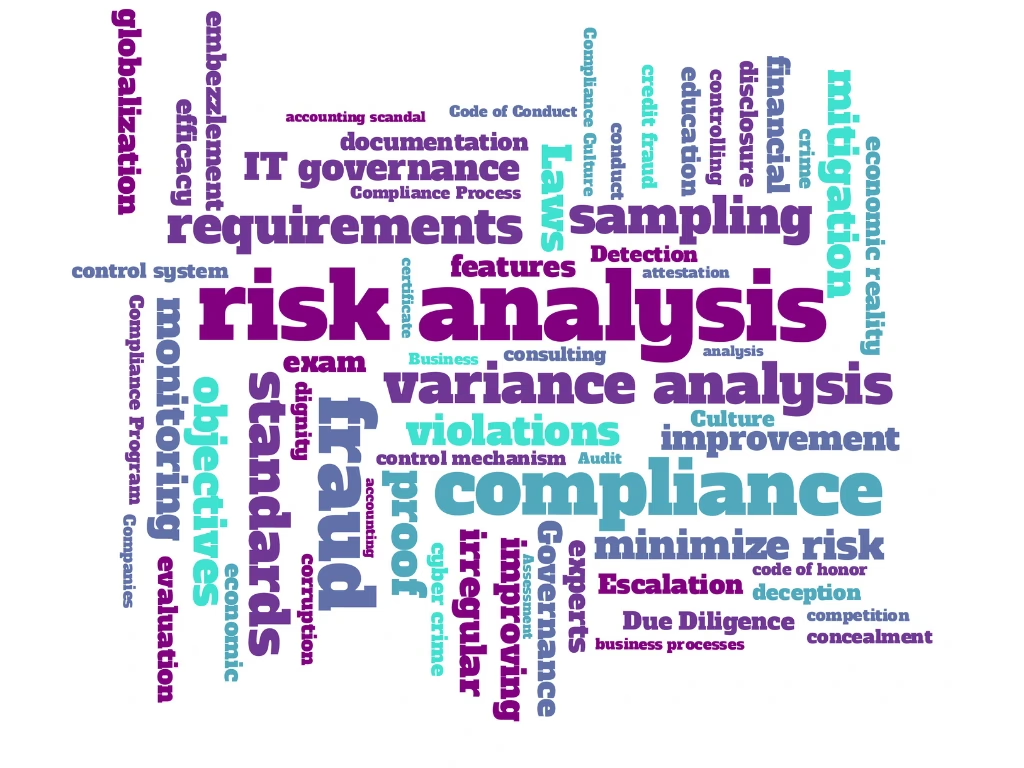Risk Types in Project Management | Complete Guide
Published:
Updated:

In project management, it is essential to be aware of the common risks that can arise in any project that can hurt the project. This article will discuss the common risk types in project management and how you avoid them altogether.
Before telling you about common risks, we will explain what risk means in project management.
If you want to learn about Risk Register you can click on the link to review the resource we've created for you.
What is Risk in Project Management?
A project risk is any unexpected event or situation that has the potential to affect a project's goals or outcome. This project risk can either be positive or negative. The project manager's job is to identify and develop strategies to manage these uncertain events throughout the project's lifecycle.
Assume that you're working as a project manager for the construction of a new skyscraper, and the team identifies that the building site is located in an area with a higher chance of floods during heavy rains. As a project manager, you must develop a strategy if flooding occurs. The strategy might include installing a drainage system to help avoid flooding during heavy rains.
Why is Understanding Risk Important for Project Managers?
As a project manager, you are the captain of your project's ship and must navigate the waters of uncertainty and change. You must know about the risks that lie ahead, as they can make or break your journey.
By understanding these risks, project managers can develop a plan to avoid them, minimize their impact or even turn them into opportunities.
Let's say that you're building a bridge, and the materials you have planned to use are unavailable or they've become quite expensive. By identifying this risk and developing a strategy to mitigate this risk, you can renegotiate with your suppliers, look for alternative materials or even adjust your budget.
Risk management is not only about preventing negative outcomes; it can also help you capitalize on opportunities. By identifying the outcomes early on, you can take advantage and achieve better results than originally planned.
Furthermore, it helps you to communicate more effectively with your stakeholders. When you have identified, analyzed, and have a plan to address the risks, you can assure your stakeholders that you are on top of things and have a plan in place. Risk planning helps build trust and confidence in your project.
Common Risk Types in Project Management
Whether you're an experienced project manager or just starting, understanding these common risks is important in ensuring your project's success.
Financial Risk
Financial risk is a type of project risk that encompasses anything related to costs and money. This type of risk can happen when project costs escalate, budgets are exceeded, or there are changes to the financial standing of the stakeholders. Some common causes of financial risk include scope creep, inflation, and poor budget planning. To effectively manage financial risk, project managers should create a financial risk log that identifies potential risks and then create a plan to mitigate them. Financial risk planning can include clarifying expectations with stakeholders and reassessing risks more likely to occur.
Schedule Risk
Schedule risk is a type of project risk that is related to time. This risk occurs when events occur that affect the timeline of a project and can cause the project to take longer than originally scheduled.
Common causes of schedule risk include:
- Team members need to perform optimally.
- Stakeholders need to be more reachable.
- Additional project deliverables are being requested.
To manage schedule risk, project managers should create a detailed project plan, establish realistic timelines and conduct regular schedule monitoring. It's also important to be prepared for the unexpected, such as pandemics or other events that can cause delays.
Performance Risk
Performance risk is a type of project risk that occurs when a project is unlikely to produce the desired results. This risk can directly impact the company's overall success and can result in additional funding being required. Common causes of performance risk include lack of clear communication, unrealistic expectations, and problematic deliverables. Effective communication strategies among stakeholders should be implemented to reveal performance lapses before they cause a project failure.
Operational Risk
Operational risk is a type of project risk that arises from poor implementation and process problems in various operations, such as the acquisition of work tools, production, marketing, distribution, and supply chains. This risk can affect the project's performance and outcome. It can be caused by poor coordination among different departments, lack of proper communication among team members, and process inefficiencies. Project managers should establish clear operational procedures to effectively manage operational risk, conduct regular operational monitoring, and take necessary actions to address any operational issues.
Market Risk
Market risks are the type of risk that occurs when the market fluctuates. There are two forms of risk in this category: systematic and unsystematic. Systematic risks are major risks that affect all investments, such as when commodity prices rise, whereas unsystematic risks affect only a few investments, such as specific company concerns.
To deal with market risks, you must first identify the sources of the risks and determine how much they will impact the project. You can create a complete contingency plan once you have this information.
Legal Risk
Market risks are the type of risk that occurs when the market fluctuates. There are two forms of risk in this category: systematic and unsystematic. Systematic risks are major risks that affect all investments, such as when commodity prices rise, whereas unsystematic risks affect only a few investments, such as specific company concerns.
To deal with market risks, you must first identify the sources of the risks and determine how much they will impact the project. You can create a complete contingency plan once you have this information.
Legal Risk
A unique set of risks are involved in most IT projects, including cybersecurity risks, data loss and integrity risks, and integration risks. These common IT-related risks can hurt the project, which is why project managers must be aware of these common types of IT risks.
External Hazard Risks
External hazard risks originate from external sources such as natural disasters, acts of terrorism, and societal factors, which are often unpredictable and can significantly impact a project.
These risks include severe weather events, natural disasters, vandalism or sabotage, civil unrest, and labor strikes. These risks can be particularly challenging to manage as they are not within the project team's control, but they should be considered and prepared for as much as possible to minimize the damage they can cause to the project.
Ways to Handle Different Risks in Project Management
There are several ways to avoid and handle risks in project management which are as follows.
Early Risk Identification
To avoid and handle any risks, you need to identify them early; this means that project managers should continuously monitor the project and its environment to identify potential risks before they become problems.
This early identification allows the project managers to take proactive measures to mitigate or avoid those risks before they become major problems in the project.
Creating a Risk Management Plan
Once potential risks have been identified, the next step is to create a risk management plan. The risk management plan and risk register should detail the risks identified, the likelihood of them occurring, and the potential impact on the project.
It should also outline the specific measures that will be taken to mitigate or avoid the risks. The risk management plan should be reviewed and updated regularly as new risks are identified, or the project changes.
Monitoring and Controlling Risks
Once the risk management plan is in place, project managers should continuously monitor and control risks. Monitoring means keeping an eye on identified risks and taking action to mitigate or avoid them as necessary. It also means reviewing the risk management plan and updating it as necessary based on changes in the project or new risks that are identified.
Prioritizing Risks
After identifying the risks, it is important to prioritize them as you want to address them first, which can have a greater impact on the project, in order of importance for the business. It's important to note that some risks may take longer, while others, such as cost and legal risks, may require prompt attention. This method helps allocate limited resources effectively to mitigate the significant risks first.
Using a Risk Management Tools
If you're looking to manage or avoid risk, you need to use a software tool that can help you to identify, assess, and track risks. One such tool which is used quite often is Risk Register. With the help of a risk register, the project managers can document, analyze, and track the status of the risk. Apart from tracking the status, the project managers can also use it to update the risk management plan as needed.
Besides using a risk register, you can use different techniques like SWOT analysis and brainstorming that can help you to mitigate the risks in the project.
Creating a Contingency Plan
A contingency plan is a course of action that is put in place to mitigate the impact of a risk. It's an essential part of a risk management plan, which provides a way to handle risks when they happen so that a project can continue. Contingency planning can include securing resources, bringing expertise, or modifying the project scope or timeline. Every project manager should have a contingency plan in place.
Conclusion
To sum it up, identifying and managing risks is critical to project management. It is essential to understand the different types of risks that can occur and strategies for handling them. This way, the project managers can increase the chances of success for their projects.

